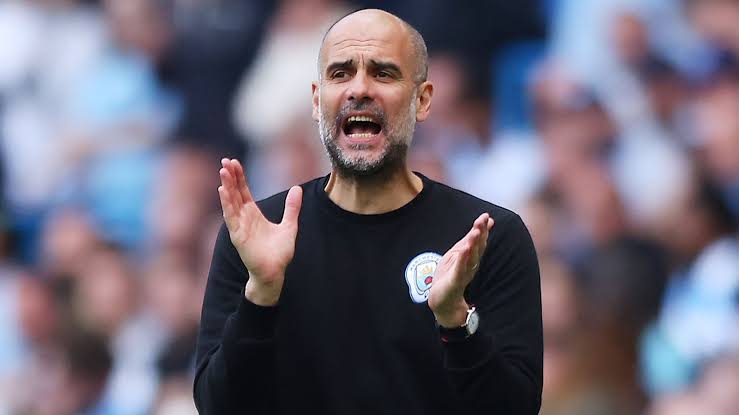Fulham 0-2 Manchester City: Highlights, man of the match, stats as Ilkay Gundogan stars

In what proved to be one of the most crucial matches of Manchester City’s tumultuous season, Pep Guardiola’s men delivered when it mattered most, securing a vital 2-0 victory over Fulham at Craven Cottage on the final day of the Premier League campaign. The result ensured City’s qualification for next season’s Champions League, finishing third in the table with 71 points and providing a much-needed boost after what has been a challenging year for the Citizens.
The Stakes and Context
Manchester City arrived at Craven Cottage knowing that nothing less than victory would guarantee their place among Europe’s elite next season. After a season that has seen them struggle to match the heights of previous campaigns, the prospect of missing out on Champions League football would have represented a seismic shift for a club accustomed to competing at the highest level.
The Citizens had endured their fair share of disappointments throughout the 2024-25 campaign, including a painful defeat in the FA Cup final that had cast doubt over their ability to perform in high-pressure situations. However, their improved form in the latter stages of the season had provided hope that they could secure the crucial third-place finish required for automatic Champions League qualification.
Fulham, meanwhile, entered the match with their own ambitions effectively ended. The Cottagers had harbored hopes of European qualification for much of the season, but an inconsistent run of form in the closing weeks had seen those dreams fade. Nevertheless, Marco Silva’s side remained dangerous opponents, particularly at their fortress-like home ground, where they had regularly troubled visiting teams throughout the campaign.
First Half: Gundogan’s Moment of Magic
The opening exchanges at Craven Cottage reflected the contrasting pressures facing both sides. Manchester City, aware of the magnitude of the task ahead, started cautiously, probing for weaknesses in Fulham’s defensive structure while remaining mindful of the counter-attacking threat posed by their hosts.
Fulham, freed from the burden of expectation, looked to capitalize on City’s nervousness and created several promising opportunities in the opening twenty minutes. The home side’s direct approach and physicality caused problems for City’s defense, with Marco Silva’s tactical setup designed to exploit any hesitancy in the visitors’ play.
However, it was Manchester City who would break the deadlock in spectacular fashion, courtesy of a moment of individual brilliance that encapsulated everything that makes football beautiful. The goal, scored by Ilkay Gundogan in the 21st minute, will undoubtedly be remembered as one of the finest strikes of the entire Premier League season.
The move began down City’s right flank, where Matheus Nunes combined effectively with Omar Marmoush, showcasing the kind of fluid interchange that has become synonymous with Guardiola’s tactical philosophy. Marmoush, operating in his familiar full-back position, demonstrated his attacking instincts by driving forward into the penalty area, his pace and directness causing immediate problems for Fulham’s defensive line.
As Marmoush approached the byline, he attempted an audacious chip over Fulham goalkeeper Bernd Leno, a move that required both technical skill and tactical awareness. Leno, demonstrating the reflexes that have made him one of the Premier League’s most reliable goalkeepers, managed to get a crucial touch to the ball, redirecting it toward the back post rather than allowing it to find the top corner.
What happened next was pure poetry in motion. Gundogan, who had positioned himself perfectly at the far post, read the flight of the deflected ball with the instinct of a player who has operated at the highest level throughout his career. As the ball looped toward him, the German midfielder executed a bicycle kick of extraordinary technical proficiency, his acrobatic effort striking the crossbar before rebounding into the net.
The goal was a testament to Gundogan’s exceptional technique and spatial awareness, but it also highlighted Manchester City’s improved movement and coordination in the final third. The combination play between Nunes and Marmoush, followed by Gundogan’s perfectly timed run and finish, demonstrated the kind of collective understanding that had been missing from City’s play for much of the season.
The strike sent the traveling City supporters into raptures and provided the perfect response to the early pressure applied by Fulham. More importantly, it settled City’s nerves and allowed them to play with greater freedom and confidence for the remainder of the half.
Following Gundogan’s opener, Manchester City began to assert greater control over the proceedings. Their passing became more incisive, their movement more coordinated, and their defensive shape more disciplined. Fulham, while continuing to pose a threat on the counter-attack, found it increasingly difficult to create clear-cut chances against a City side that was growing in confidence with each passing minute.
The remainder of the first half saw City create several additional opportunities, with their improved rhythm and tempo causing constant problems for Fulham’s defensive unit. However, they were unable to extend their advantage before the interval, leaving the door slightly ajar for a potential Fulham comeback in the second period.
Second Half: Haaland Seals the Victory
The second half began with Fulham showing renewed determination to salvage something from the match. Silva’s halftime team talk had clearly emphasized the need for greater urgency and intensity, and his players responded accordingly, pressing higher up the pitch and creating several promising positions in the opening stages of the half.
However, Manchester City’s experience and composure under pressure proved decisive. Rather than allowing themselves to be overwhelmed by Fulham’s increased intensity, Guardiola’s men maintained their discipline and continued to probe for opportunities to extend their lead.
The decisive moment arrived in the 73rd minute, and once again, it was Gundogan who proved to be the catalyst for City’s success. The German midfielder, who had already provided the moment of magic that opened the scoring, found himself at the center of another crucial incident that would effectively seal the victory.
Gundogan’s movement in the penalty area demonstrated his exceptional football intelligence and understanding of space. As City built their attack patiently, the midfielder identified a pocket of space that would allow him to receive the ball in a dangerous position. His run was perfectly timed, and as he collected possession, he immediately drew the attention of Fulham’s defensive players.
Sasa Lukic, Fulham’s experienced midfielder, found himself in a challenging position as Gundogan threatened to turn and create a shooting opportunity. In his attempt to dispossess the City player, Lukic made contact that was deemed sufficient by the referee to warrant a penalty award. The decision was instantaneous, with the official pointing to the spot without hesitation.
While Lukic and his teammates protested the decision, replays suggested that the referee had made the correct call. Gundogan’s intelligent movement had created a situation where contact was almost inevitable, and the German’s experience in such situations proved invaluable in winning the crucial penalty.
Erling Haaland, Manchester City’s prolific striker, stepped up to take the penalty with the composure that has characterized his performances throughout his time at the club. The Norwegian’s penalty-taking technique is a study in precision and power, combining placement with enough pace to make it virtually impossible for goalkeepers to make successful saves even when they choose the correct corner.
Haaland’s execution was flawless. His run-up was measured and deliberate, his body language suggesting complete confidence in his ability to convert the opportunity. As he struck the ball, he placed it perfectly into the bottom corner, sending Leno diving in the opposite direction and leaving the Fulham goalkeeper with no chance of making a save.
The goal effectively ended the contest as a meaningful spectacle, providing Manchester City with the two-goal cushion that would prove insurmountable for Fulham in the remaining minutes. More importantly, it guaranteed City’s place in next season’s Champions League, achieving the primary objective that had driven their preparation and performance throughout the match.
Tactical Analysis and Key Performances
Manchester City’s victory was built on several key tactical elements that demonstrated both their individual quality and collective understanding. Guardiola’s team selection and tactical setup reflected his awareness of the match’s importance, with the Catalan coach choosing a formation that balanced attacking threat with defensive stability.
The performance of Ilkay Gundogan deserves particular recognition, not merely for his spectacular goal and penalty-winning contribution, but for his overall influence on the match. The German midfielder’s movement, passing, and tactical awareness were exemplary throughout, creating five scoring opportunities for his teammates while also being fouled four times, highlighting his importance to City’s attacking structure.
Gundogan’s bicycle kick goal will be remembered as a moment of individual brilliance, but it was also representative of his consistent ability to arrive in dangerous positions at crucial moments. His penalty-winning incident in the second half demonstrated his intelligence and experience, showing how veteran players can influence matches through subtle movements and positioning.
The combination play between Matheus Nunes and Omar Marmoush for the opening goal highlighted another positive aspect of City’s performance. The fluidity of their interchange and the quality of their decision-making in the final third suggested that Guardiola’s tactical principles remain as relevant and effective as ever, even during a challenging season.
Erling Haaland’s penalty conversion was a reminder of his clinical finishing ability, but the Norwegian’s overall contribution extended beyond his goal. His movement and positioning throughout the match created space for teammates and drew defensive attention that allowed other players to find promising positions.
From a defensive perspective, Manchester City showed the kind of discipline and organization that had been missing from some of their earlier performances this season. Their ability to maintain their shape while under pressure from Fulham’s counter-attacks demonstrated improved communication and collective understanding.
Fulham’s Perspective and Performance
Despite the defeat, Fulham’s performance contained several positive elements that will provide encouragement for Marco Silva and his coaching staff as they prepare for next season. The Cottagers created numerous opportunities throughout the match, registering 13 shots and accumulating 1.74 expected goals, statistics that suggest they posed a genuine threat to Manchester City’s defense.
Fulham’s direct approach and physical intensity caused problems for City, particularly in the opening stages of both halves. Their willingness to press high and engage in physical duels demonstrated the kind of commitment and determination that has characterized their performances throughout the season.
However, the lack of clinical finishing proved costly for the home side. While they created promising positions and tested City’s defensive resolve on multiple occasions, they were unable to convert their opportunities into goals. This deficiency in the final third ultimately proved decisive in determining the match’s outcome.
The performance of Bernd Leno in goal for Fulham deserves recognition, with the German goalkeeper making several important saves to prevent the margin of defeat from becoming more substantial. His touch on Marmoush’s chip, while ultimately leading to Gundogan’s spectacular goal, demonstrated his quick reflexes and positioning.
Statistical Overview and Match Dynamics
The statistical breakdown of the match reveals interesting insights into how the game unfolded and why Manchester City emerged victorious despite Fulham’s competitive performance. City’s slight advantage in possession (53% to 47%) reflected their ability to control the tempo of the match while remaining alert to counter-attacking threats.
Manchester City’s superior shot count (20 to 13) and shots on target (5 to 3) demonstrated their greater efficiency in creating clear-cut chances. This statistical advantage was particularly significant given the match’s importance and the pressure both teams faced.
The corner count (6-1 in City’s favor) suggested their dominance in attacking areas and their ability to create sustained pressure in dangerous zones. This territorial advantage proved crucial in creating the conditions for both goals.
Fulham’s higher foul count (11 to 5) reflected their more physical approach and their willingness to disrupt City’s rhythm through tactical fouls and aggressive challenges. However, this approach ultimately backfired when Lukic’s challenge on Gundogan resulted in the penalty that sealed the match.
Implications and Future Outlook
Manchester City’s victory and subsequent Champions League qualification represents more than just a successful conclusion to a difficult season. It provides the foundation for future success and maintains the club’s status among European football’s elite institutions.
The qualification ensures that City will continue to attract world-class players and maintain their competitive edge in the transfer market. It also provides crucial revenue streams that will support future squad development and infrastructure improvements.
For Pep Guardiola, the victory validates his tactical approach and provides momentum heading into the summer transfer window. The improved performances in the season’s closing stages suggest that his methods remain effective and that with appropriate reinforcements, City can return to challenging for major honors next season.
The development of players like Matheus Nunes and Omar Marmoush, as evidenced by their contribution to the opening goal, provides encouragement for the future. Their integration into Guardiola’s tactical system suggests that City’s transition to a new generation of players is progressing successfully.
Conclusion
Manchester City’s 2-0 victory over Fulham at Craven Cottage will be remembered as a crucial moment in the club’s recent history. Faced with the prospect of missing out on Champions League qualification for the first time in years, Guardiola’s men delivered a performance that combined individual brilliance with collective determination.
Ilkay Gundogan’s spectacular bicycle kick goal provided the perfect opening, while Erling Haaland’s penalty conversion sealed a victory that ensures City’s continued participation in European football’s premier competition. The result represents not just an end to a challenging season, but a foundation for future success.
As Manchester City prepares for another campaign in the Champions League, this victory at Fulham will serve as a reminder of their resilience and quality when it matters most. In football, as in life, it is often not how you start but how you finish that defines success, and City’s strong conclusion to the season provides the perfect platform for renewed ambitions and achievements in the campaigns to come.














